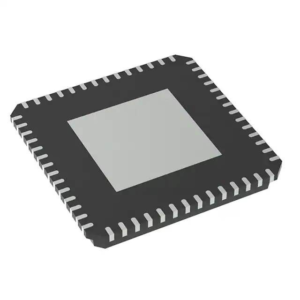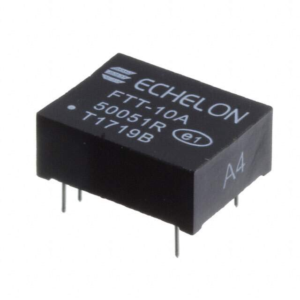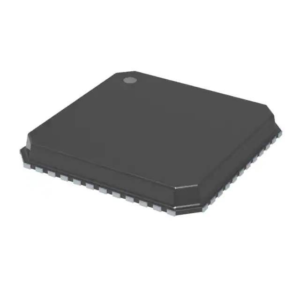Integrated circuits (ICs), often called microchips or chips, are fundamental components in modern electronics. They revolutionized the field of electronics by packing thousands to billions of electronic components onto a single semiconductor wafer, typically made of silicon.
This article will delve into the intricacies of integrated circuits, from their history and types to their structure, fabrication process, applications, and future trends.
What Is An Integrated Circuit
Here is the definition of an integrated circuit:
An integrated circuit (IC), often referred to as a microchip or chip, is a miniature electronic circuit consisting of various interconnected components fabricated onto a single semiconductor substrate. These components can include transistors, resistors, capacitors, diodes, and interconnections, all integrated into a small, compact package.
What is Integrated Circuit in Computer
An Integrated Circuit (IC), also known as a microchip or simply a chip, or semiconductor, is a compact and complex electronic component that contains a set of interconnected electronic circuits on a small, flat piece of semiconductor material, typically silicon. Integrated circuits are fundamental building blocks of modern electronic devices and computers. Here’s a detailed look at integrated circuits:
Structure and Components
- Semiconductor Material: The base material for ICs is usually silicon, which is a semiconductor.
- Transistors: The basic building blocks of ICs are transistors, which act as switches or amplifiers.
- Diodes: These components allow current to flow in one direction and block it in the opposite direction.
- Resistors and Capacitors: These passive components regulate the flow of current and store electrical charge.
- Metal Layers: Used for creating the electrical connections between different components within the IC.
Importance of Integrated Circuits
The importance of integrated circuits (ICs) in modern technology cannot be overstated. These tiny electronic marvels have revolutionized the way we live, work, communicate, and interact with the world around us. Here are several key reasons why integrated circuits are so crucial:
- Compactness: Integrated circuits allow for the integration of numerous electronic components onto a single chip, drastically reducing the size of electronic devices. This compactness is vital for the development of portable gadgets such as smartphones, laptops, and wearable devices.
- Performance: Integrated circuits offer high performance in terms of speed, efficiency, and reliability. They enable faster processing speeds, lower power consumption, and greater computational capabilities, enhancing the performance of electronic devices across various applications.
- Cost-effectiveness: The mass production of integrated circuits has driven down manufacturing costs, making electronic devices more affordable and accessible to consumers worldwide. This cost-effectiveness has democratized technology and expanded its reach to a broader audience.
- Versatility: Integrated circuits are incredibly versatile, capable of performing a wide range of functions across different industries and applications. They can be customized and optimized for specific tasks, making them suitable for diverse fields such as telecommunications, healthcare, automotive, and aerospace.
- Reliability: Integrated circuits offer high levels of reliability and durability, thanks to their monolithic construction and advanced manufacturing processes. They are less susceptible to environmental factors such as temperature variations, vibration, and shock, ensuring consistent performance over extended periods.
- Innovation: Integrated circuits continue to drive innovation and technological advancements across various sectors. Their small size, low power consumption, and high performance enable the development of new products and services that push the boundaries of what is possible in electronics.
- Global Impact: Integrated circuits have had a profound impact on global economies, driving economic growth, creating jobs, and fostering innovation. They form the backbone of the electronics industry, powering sectors ranging from telecommunications and computing to healthcare and entertainment.
History of Integrated Circuits
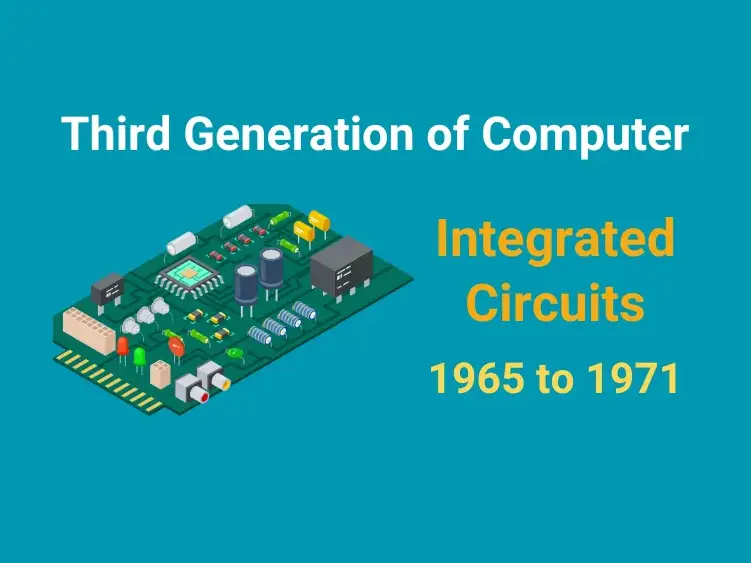
The history of integrated circuits (ICs) is a fascinating journey that spans several decades and involves the contributions of numerous pioneers and innovators. Here’s a brief overview of the key milestones and developments in the evolution of integrated circuits:
Early Concepts:
The idea of integrating multiple electronic components onto a single semiconductor substrate was first proposed in the late 1940s and early 1950s. Scientists and engineers envisioned the potential for improving the performance, reliability, and compactness of electronic devices through this integration.
Jack Kilby’s Invention:
In 1958, Jack Kilby, an engineer at Texas Instruments, made a groundbreaking breakthrough by demonstrating the first working integrated circuit. Kilby’s circuit consisted of a small block of germanium with several components connected by thin metal wires. This milestone laid the foundation for the development of integrated circuits.
Robert Noyce’s Innovation:
Concurrently, Robert Noyce, a physicist and co-founder of Fairchild Semiconductor, independently invented an improved version of the integrated circuit. Noyce’s innovation involved the use of silicon as the semiconductor material and the fabrication of circuits on a single silicon wafer. Noyce’s approach, known as the planar process, became the basis for modern integrated circuit manufacturing.
Commercialization and Expansion:
Throughout the 1960s, integrated circuits transitioned from laboratory prototypes to commercially viable products. Their adoption in various industries, including aerospace, defense, and telecommunications, fueled rapid growth and expansion in the semiconductor industry.
Moore’s Law:
In 1965, Gordon Moore, co-founder of Intel Corporation, observed a trend in which the number of transistors per square inch on integrated circuits doubled approximately every two years. This observation, known as Moore’s Law, became a guiding principle for the semiconductor industry, driving continuous innovation and miniaturization of integrated circuits.
Advancements in Manufacturing:
Over the following decades, advancements in semiconductor manufacturing technology, such as photolithography, etching, and doping, enabled the fabrication of increasingly complex and compact integrated circuits. These advancements led to the development of microprocessors, memory chips, and other high-performance ICs.
Specialization and Diversification:
Integrated circuits evolved to encompass various types and categories, including analog ICs, digital ICs, mixed-signal ICs, and application-specific integrated circuits (ASICs). Each type serves specific purposes and applications across a wide range of industries, from consumer electronics to automotive and medical devices.
Continued Innovation:
The evolution of integrated circuits continues to this day, driven by ongoing research, development, and technological advancements. Emerging technologies such as 3D integration, nanoelectronics, and quantum computing promise to further push the boundaries of what is possible with integrated circuits.
The history of integrated circuits is a testament to human ingenuity, collaboration, and relentless pursuit of innovation. From humble beginnings as laboratory experiments to becoming the backbone of modern electronics, integrated circuits have transformed the world in profound ways, shaping the way we live, work, and communicate.
Types of Integrated Circuits
Analog integrated circuits
Analog integrated circuits are designed to process continuous signals, such as audio and video, with high precision. They find applications in amplifiers, voltage regulators, and sensor interfaces.
Digital integrated circuits
Digital integrated circuits operate with discrete binary values (0s and 1s) and perform logical operations. They are the building blocks of digital computers, microcontrollers, and memory chips.
Mixed-signal integrated circuits
Mixed-signal integrated circuits combine both analog and digital functionalities on the same chip. They are commonly used in signal processing, data conversion, and communication systems.
Components and Structure of Integrated Circuits
Silicon wafer
Integrated circuits are typically fabricated on a silicon wafer, which serves as the base material for the semiconductor devices. The silicon wafer undergoes various processing steps to create the desired electronic components.
Transistors
Transistors are the primary building blocks of integrated circuits and are used for amplification, switching, and signal processing. They are formed by doping regions of the silicon wafer to create P-type and N-type semiconductor materials.
Capacitors and resistors
Capacitors and resistors are essential passive components integrated into ICs to control voltage levels, filter signals, and provide impedance matching. They are fabricated using specialized techniques during the chip manufacturing process.
Fabrication Process of Integrated Circuits
Photolithography
Photolithography is a crucial step in the fabrication of integrated circuits, involving the transfer of circuit patterns onto the silicon wafer using photoresist masks and ultraviolet light.
Etching
Etching processes are used to selectively remove unwanted materials from the silicon wafer, defining the precise shapes and structures of the integrated circuit components.
Doping
Doping involves the introduction of impurities into the silicon wafer to alter its electrical properties, such as conductivity and carrier concentration, thereby forming transistors and other semiconductor devices.
Applications of Integrated Circuits
Consumer electronics
Integrated circuits are ubiquitous in consumer electronics, including smartphones, tablets, televisions, and gaming consoles, where they enable advanced functionality in compact form factors.
Automotive industry
In the automotive industry, integrated circuits are used in engine control units, navigation systems, entertainment systems, and safety features, enhancing vehicle performance and efficiency.
Medical devices
Integrated circuits play a crucial role in medical devices such as pacemakers, MRI machines, and glucose monitors, enabling precise monitoring, diagnosis, and treatment of various health conditions.
Advantages and Disadvantages of Integrated Circuits
Advantages
- Compact size
- Low cost
- High reliability
- Low power consumption
- High performance
Disadvantages
- Complexity in design and manufacturing
- Vulnerability to radiation and electrostatic discharge
- Limited scalability beyond certain technology nodes
How Did the Integrated Circuit Affect the Development of Computers
The advent of the integrated circuit (IC) profoundly impacted the development of computers, revolutionizing the industry in several key ways:
1. Miniaturization
Before ICs: Early computers relied on large, bulky discrete components such as vacuum tubes and transistors. This made computers enormous, taking up entire rooms and requiring significant power and cooling systems.
With ICs: Integrated circuits allowed for the miniaturization of electronic components. Many transistors, resistors, and capacitors could be placed on a single chip, drastically reducing the size of computers. This paved the way for the development of personal computers, laptops, and eventually mobile devices.
2. Increased Processing Power
Before ICs: Computing power was limited by the physical space and the number of components that could be feasibly interconnected.
With ICs: The high density of components on an integrated circuit significantly increased computing power. As IC technology advanced, more transistors could be packed into smaller spaces (as described by Moore’s Law), leading to exponential growth in processing capabilities. This enabled the development of faster and more efficient computers capable of handling complex tasks.
3. Cost Reduction
Before ICs: The cost of manufacturing and assembling discrete components was high, making computers expensive and inaccessible to the general public.
With ICs: Integrated circuits reduced manufacturing costs through mass production. The economies of scale made it possible to produce powerful and affordable computers, leading to widespread adoption in homes, schools, and businesses.
4. Reliability and Durability
Before ICs: Computers with discrete components had higher failure rates due to the numerous connections and the reliability issues of individual components like vacuum tubes.
With ICs: Integrated circuits increased the reliability of computers by reducing the number of physical connections and improving the quality and consistency of components. This enhanced the durability and longevity of computers, making them more suitable for critical applications.
5. Innovation and Advancements
Before ICs: Innovation was limited by the constraints of existing technologies, which were bulky, slow, and expensive.
With ICs: The development of ICs spurred innovation in computer architecture, software development, and application areas. It enabled the creation of more sophisticated operating systems, advanced programming languages, and complex software applications. This innovation has continued to drive progress in fields such as artificial intelligence, data science, and robotics.
6. Portability
Before ICs: Computers were stationary and required dedicated space and infrastructure.
With ICs: The miniaturization and integration capabilities of ICs allowed for the development of portable computing devices, such as laptops, tablets, and smartphones. This portability transformed how and where people could use computers, leading to the mobile computing revolution.
How Does an Integrated Circuit Signal Information
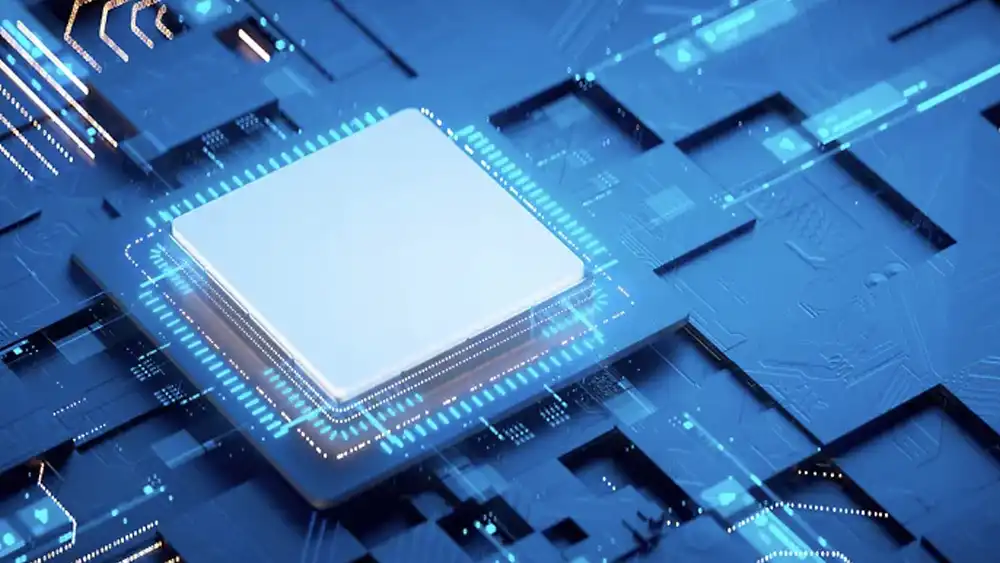
An integrated circuit (IC) signals information by using a combination of electrical signals, typically in the form of voltage levels, to represent and process data. Here’s a simplified explanation of how this works:
1. Transistors:
- Basic Building Blocks: Transistors are the fundamental components in an IC. They act as switches that can turn on or off the flow of electricity.
- Binary Representation: Transistors help create the binary system used in digital electronics, where ‘on’ (a high voltage) represents a binary ‘1’ and ‘off’ (a low voltage) represents a binary ‘0’.
2. Logic Gates:
- Combining Transistors: Transistors are combined to form logic gates, which perform basic logical functions like AND, OR, and NOT.
- Processing Data: Logic gates process binary signals to perform computations. For example, an AND gate will only output a ‘1’ if all its inputs are ‘1’.
3. Interconnections:
- Wiring: Tiny metal paths connect the transistors and logic gates, allowing electrical signals to travel between them.
- Signal Routing: These paths route signals to the correct parts of the IC to perform operations.
4. Analog Signals:
- Continuous Values: Some ICs work with analog signals, which can take any value within a range and are used in applications like audio processing.
- Amplifiers and Filters: These ICs contain components like amplifiers to boost signal strength and filters to modify signal frequencies.
5. Clock Signals:
- Timing: Many ICs use a clock signal to synchronize operations. The clock generates a regular pulse that coordinates when transistors should switch states.
- Sequential Logic: In systems like processors, the clock signal ensures that operations occur in a defined sequence, allowing for complex computations and data processing.
6. Data Storage:
- Memory Cells: ICs often include memory cells that store binary data. These cells use arrangements of transistors to maintain a state representing ‘0’ or ‘1’.
- Read/Write Operations: Data can be written to or read from these cells based on control signals.
7. Communication:
- Input/Output (I/O) Pins: ICs communicate with the outside world through I/O pins. Signals are sent and received via these pins to interact with other components.
- Protocols: Communication often follows specific protocols to ensure data is transmitted accurately and efficiently.
Example of Signal Flow in a Processor:
- Fetching Instructions: The processor receives an instruction from memory, which is encoded in binary.
- Decoding: The instruction is decoded to determine the necessary operations.
- Execution: Logic gates and arithmetic units process the data, using transistors to perform calculations.
- Storing Results: The results are stored back in memory or sent to an output device.
Conclusion
Integrated circuits have revolutionized the field of electronics and have become indispensable in modern technology. With ongoing advancements in design, fabrication, and materials, integrated circuits are poised to continue driving innovation across various industries, shaping the future of electronics.
FAQs
What are some common examples of integrated circuits?
Common examples include microprocessors, memory chips, operational amplifiers, and radio frequency (RF) transceivers.
How do integrated circuits differ from other electronic components?
Integrated circuits contain multiple electronic components fabricated onto a single semiconductor substrate, whereas other electronic components, such as discrete transistors and resistors, are individual units.
What are the primary challenges in the fabrication of integrated circuits?
Fabricating integrated circuits involves complex processes such as photolithography and doping, which require precise control and optimization to ensure high yield and performance.
How do integrated circuits contribute to technological advancements?
Integrated circuits enable the development of increasingly sophisticated electronic devices with enhanced functionality, performance, and efficiency, driving technological advancements in areas such as computing, communication, healthcare, and transportation.
What role do integrated circuits play in the Internet of Things (IoT)?
Integrated circuits serve as the backbone of IoT devices, providing connectivity, processing power, and sensor integration necessary for collecting, analyzing, and transmitting data in smart home systems, industrial automation, environmental monitoring, and more.
